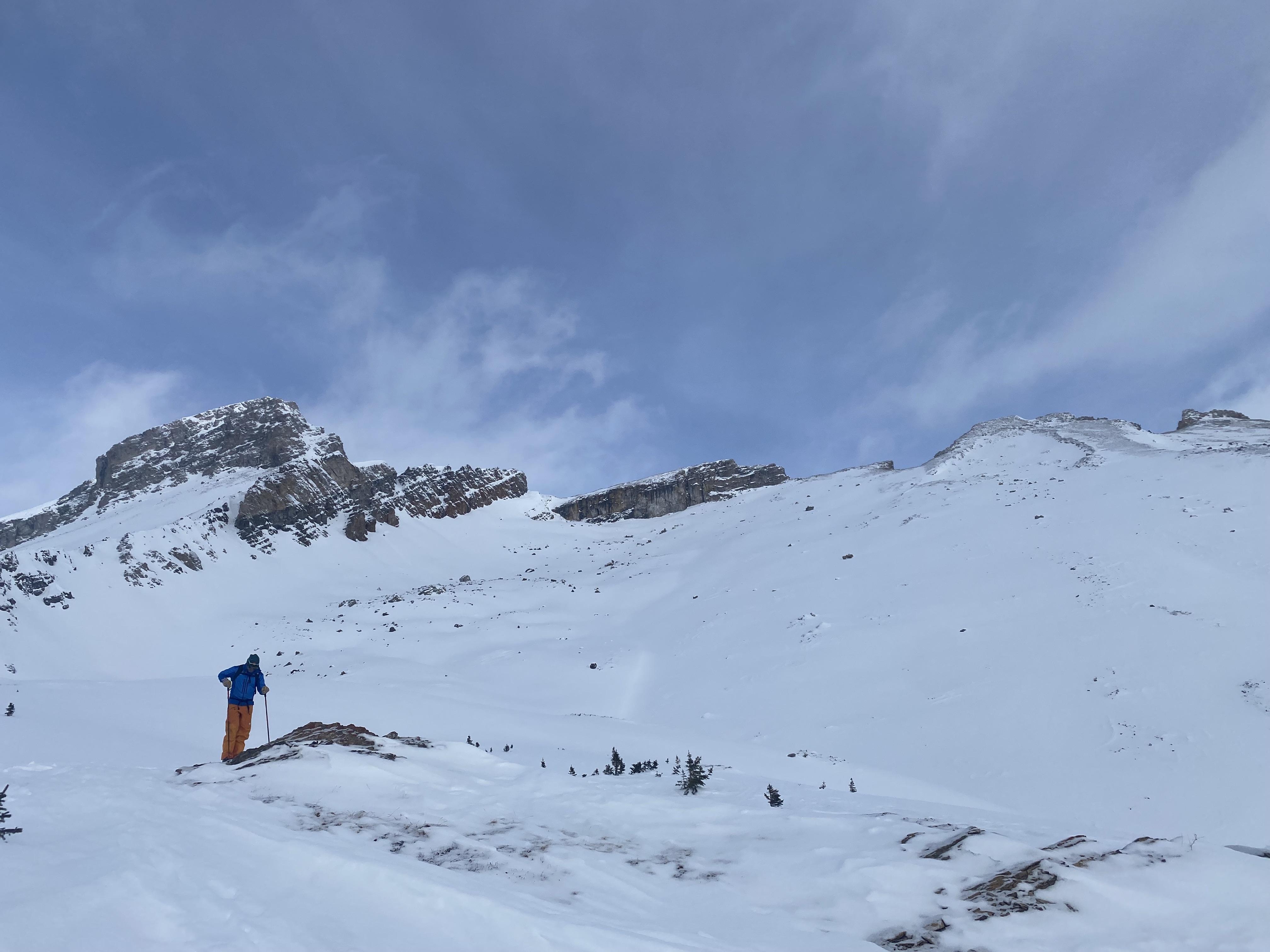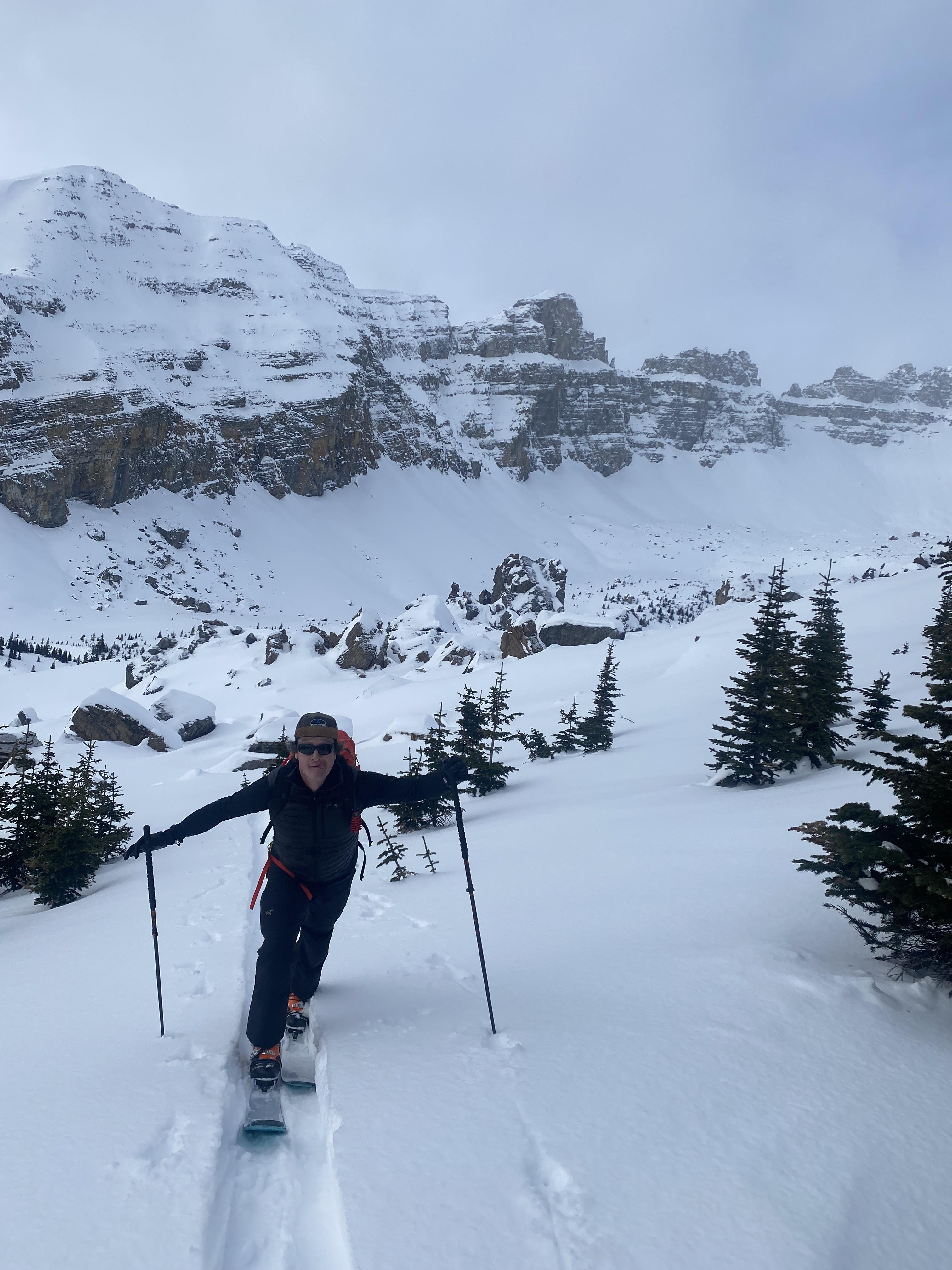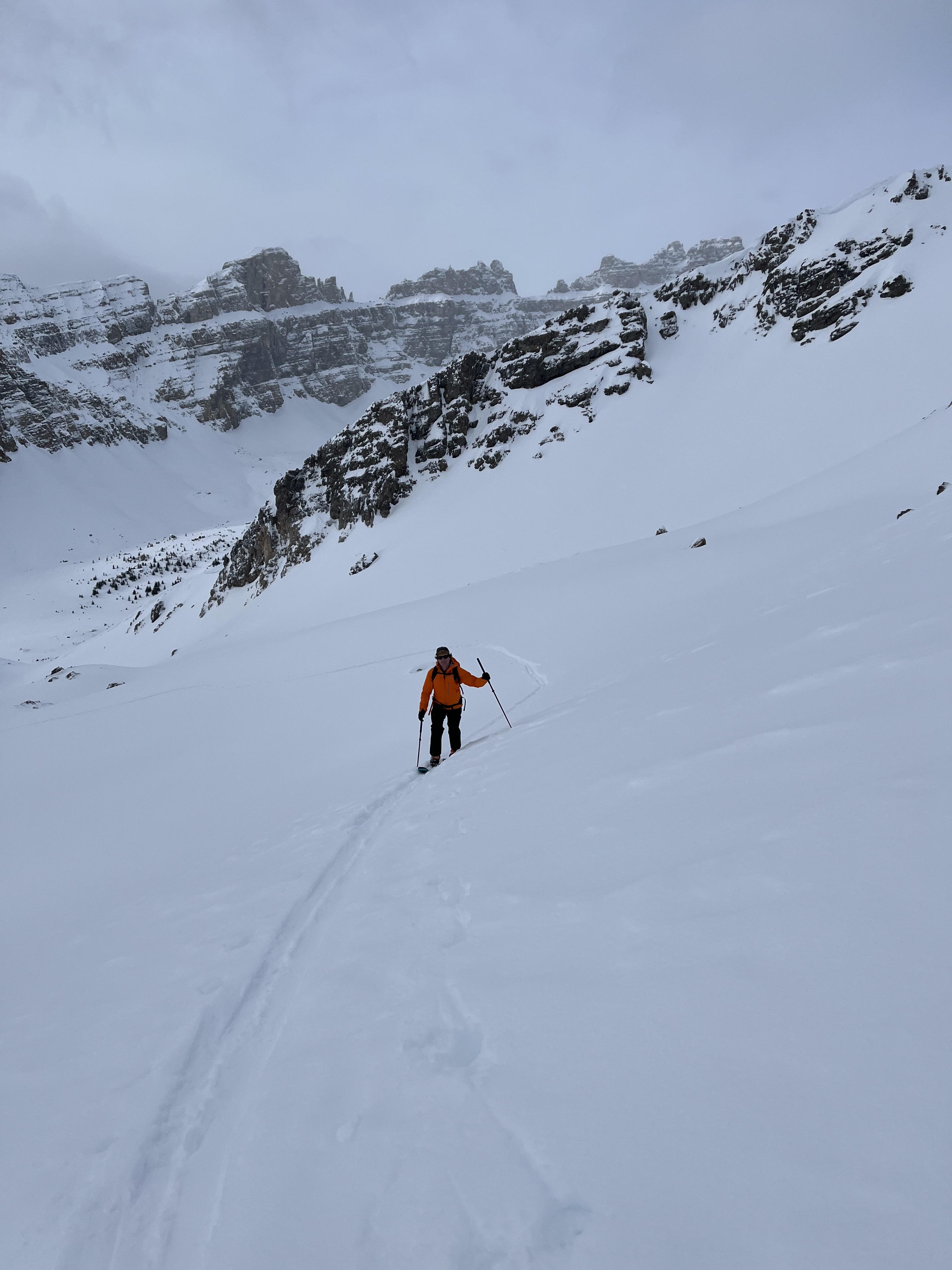I spent the day with a few friends touring into Puzzle Peak. This was only my second day ski touring in the Rockies this season as conditions this early season could be characterized as 'challenging'. The snowpack is pleasantly beginning to support human weight for the most part but there are still moments when the skis fall through but overall travel is a far more user friendly.
Temps ranged from -5.0 to -8.0. Winds light in the AM and light to moderate and picking up steam in the late afternoon out of the south. There was about 3 cm of low density fluff that had been lightly redistributed and we were able to milk the troughs and get some decent ski quality today.
I did not dig on this day but did a bunch of pole probing through the day. I did not feel the need to dig into the snowpack because the facets are everywhere, the snowpack is still very shallow and weak and the facets are still a thick layer near the ground making my confidence in the snowpack quite low.
We kept our exposure low by choosing Puzzle Peak as our objective. Since toe triggering is still very much possible from underneath bigger and more high consequence slopes, we kept our distance away from this kind of terrain.
Although I do not have formal test scores from today, both my simple observations of the snowpack and the investigation I have been doing frequently in the Eastern Purcells while at work demonstrates to me that the snowpack exhibits more or less, the same basic structure as the Rockies.
My general feeling is that although there is some mid pack strength beginning to take shape, I have low trust in the snowpack in these regions. I will be making pretty conservative terrain choices until the end of the winter/spring or unless there is some measurable improvement with the overall structure of the snowpack between now and late spring.



